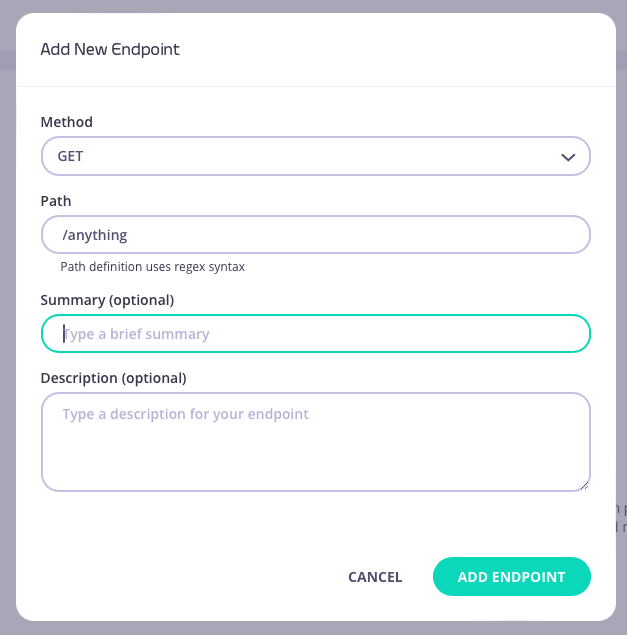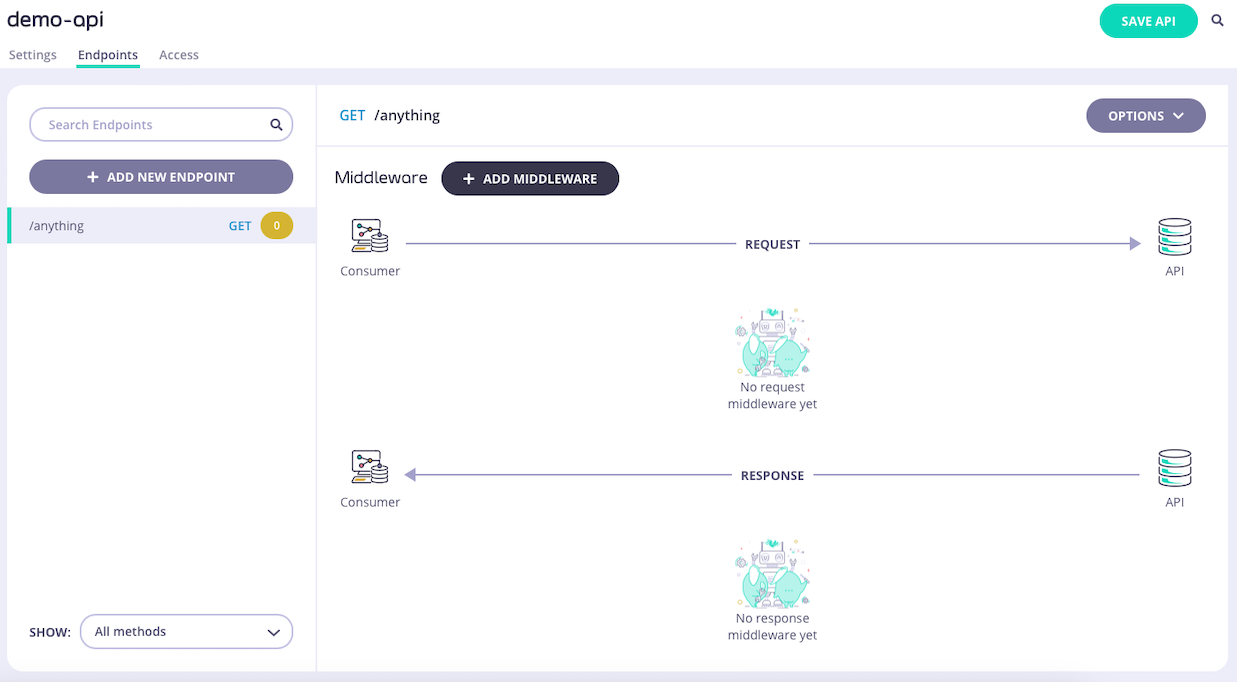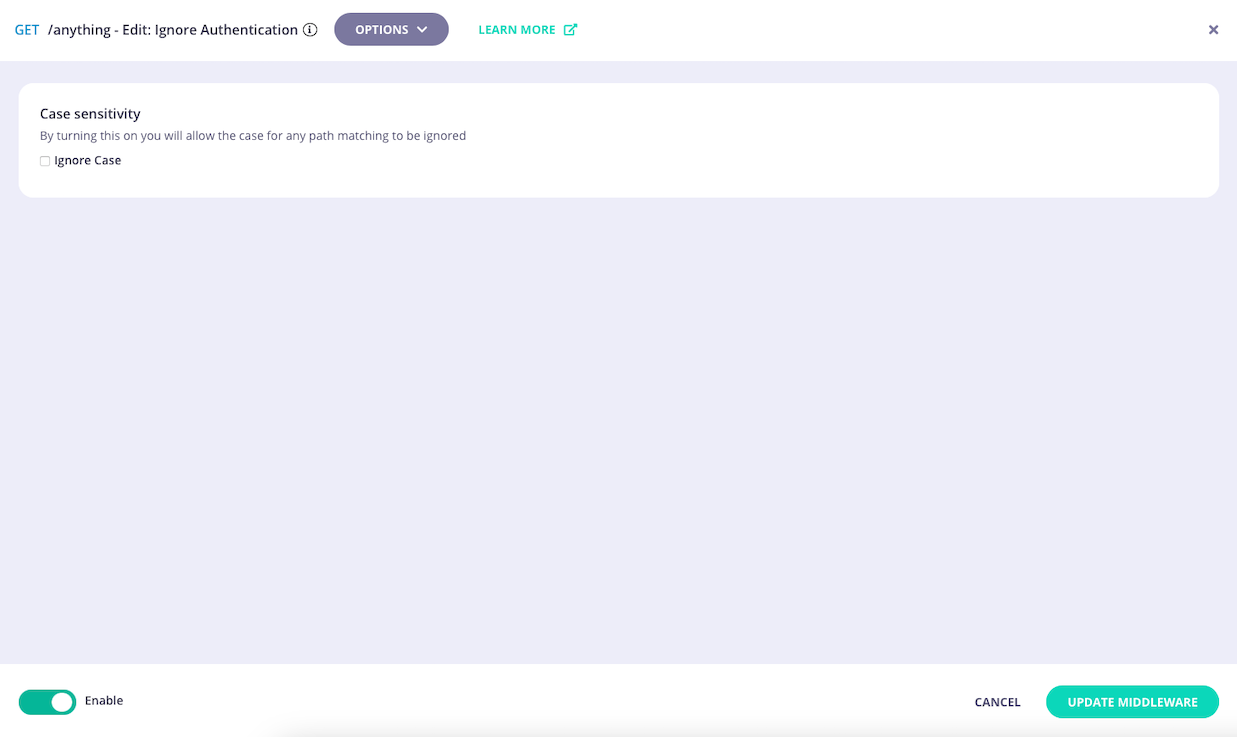Overview
The Ignore Authentication middleware instructs Tyk Gateway to skip the authentication step for calls to an endpoint, even if authentication is enabled for the API.Use Cases
Health and liveness endpoints
This plugin can be very useful if you have an endpoint (such as a ping or health check) that you don’t need to secure.Working
When the Ignore Authentication middleware is configured for a specific endpoint, it instructs the gateway to bypass the client authentication process for requests made to that endpoint. If other (non-authentication) middleware are configured for the endpoint, they will still execute on the request. It is important to exercise caution when using the Ignore Authentication middleware, as it effectively disables Tyk’s security features for the ignored paths. Only endpoints that are designed to be public or have independent security mechanisms should be configured to bypass authentication in this way. When combining Ignore Authentication with response transformations be careful not to inadvertently expose sensitive data or rely on authentication or session data that is not present.Case sensitivity
By default the ignore authentication middleware is case-sensitive. If, for example, you have defined the endpointGET /ping in your API definition then only calls to GET /ping will ignore the authentication step: calls to GET /Ping or GET /PING will require authentication. You can configure the middleware to be case insensitive at the endpoint level.
You can also set case sensitivity for the entire Tyk Gateway in its configuration file tyk.conf. If case insensitivity is configured at the gateway level, this will override the endpoint-level setting.
Endpoint parsing
When using the ignore authentication middleware, we recommend that you familiarize yourself with Tyk’s URL matching options.Tyk recommends that you use exact matching for maximum security, though prefix and wildcard strategies might also apply for your particular deployment or use case.
Using Tyk OAS
The Ignore Authentication middleware instructs Tyk Gateway to skip the authentication step for calls to an endpoint, even if authentication is enabled for the API. When working with Tyk OAS APIs the middleware is configured in the Tyk OAS API Definition. You can do this via the Tyk Dashboard API or in the API Designer. If you’re using the legacy Tyk Classic APIs, then check out the Tyk Classic page.API Definition
The design of the Tyk OAS API Definition takes advantage of theoperationId defined in the OpenAPI Document that declares both the path and method for which the middleware should be added. Endpoint paths entries (and the associated operationId) can contain wildcards in the form of any string bracketed by curly braces, for example /status/{code}. These wildcards are so they are human readable and do not translate to variable names. Under the hood, a wildcard translates to the “match everything” regex of: (.*).
The ignore authentication middleware (ignoreAuthentication) can be added to the operations section of the Tyk OAS Extension (x-tyk-api-gateway) in your Tyk OAS API Definition for the appropriate operationId (as configured in the paths section of your OpenAPI Document).
The ignoreAuthentication object has the following configuration:
enabled: enable the middleware for the endpointignoreCase: if set totruethen the path matching will be case insensitive
GET /anything endpoint. Any such calls will skip the authentication step in the Tyk Gateway’s processing chain.
- the middleware has been configured to be case sensitive, so calls to
GET /Anythingwill not skip authentication
API Designer
Adding and configuring the Ignore Authentication middleware to your API endpoints is easy when using the API Designer in the Tyk Dashboard, simply follow these steps:-
Add an endpoint
From the API Designer add an endpoint that matches the path and method to which you want to apply the middleware.



-
Select the Ignore Authentication middleware
Select ADD MIDDLEWARE and choose the Ignore Authentication middleware from the Add Middleware screen.

-
Optionally configure case-insensitivity
If you want to disable case-sensitivity for the path that you wish to skip authentication, then you must select EDIT on the Ignore Authentication icon.


- Save the API Select SAVE API to apply the changes to your API.
Using Classic
The Ignore Authentication middleware instructs Tyk Gateway to skip the authentication step for calls to an endpoint, even if authentication is enabled for the API. When working with Tyk Classic APIs the middleware is configured in the Tyk Classic API Definition. You can do this via the Tyk Dashboard API or in the API Designer. If you’re using the newer Tyk OAS APIs, then check out the Tyk OAS page. If you’re using Tyk Operator then check out the configuring the middleware in Tyk Operator section below.API Definition
To enable the middleware you must add a newignored object to the extended_paths section of your API definition.
The ignored object has the following configuration:
path: the endpoint pathmethod: this should be blankignore_case: if set totruethen the path matching will be case insensitivemethod_actions: a shared object used to configure the mock response middleware
method_actions object should be configured as follows, with an entry created for each allowed method on the path:
action: this should be set tono_actioncode: this should be set to200headers: this should be blank
GET /status/200 endpoint. Any such calls will skip the authentication step in the Tyk Gateway’s processing chain.
- the middleware has been configured to be case sensitive, so calls to
GET /Status/200will not skip authentication
API Designer
You can use the API Designer in the Tyk Dashboard to configure the Ignore Authentication middleware for your Tyk Classic API by following these steps.-
Add an endpoint for the path and select the plugin
From the Endpoint Designer add an endpoint that matches the path for which you want to ignore authentication. Select the Ignore plugin.

-
Configure the middleware
Once you have selected the Ignore middleware for the endpoint, the only additional feature that you need to configure is whether to make it case-insensitive by selecting Ignore Case.

- Save the API Use the save or create buttons to save the changes and activate the middleware.
Tyk Operator
The process for configuring the middleware in Tyk Operator is similar to that explained in configuring the middleware in the Tyk Classic API Definition. It is possible to configure an enforced timeout using theignored object within the extended_paths section of the API Definition.
In the example below the ignore authentication middleware has been configured for requests to the GET /get endpoint. Any such calls will skip the authentication step in the Tyk Gateway’s processing chain.
- the middleware has been configured to be case insensitive, so calls to
GET /Getwill also skip authentication